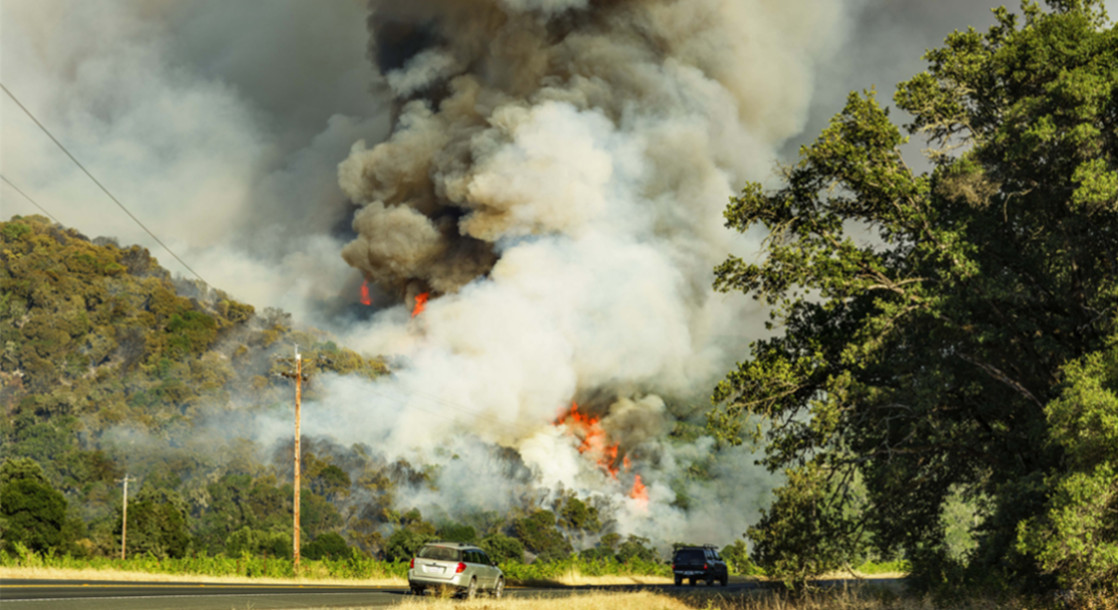Photo via Bob Dass
If your air conditioner has been working overtime this summer, you’re not alone. As firefighters and first responders from across the world trek to California to fight the state’s worst wildfire season on record, cities around the globe have experienced record temperature highs, leading scientists to desperately draw attention to what they say are immediate escalations of global climate change.
According to new analysis from U.S. News & World Report, America, the Middle East, and India have all seen record or near-record temperatures this summer, with hundreds of deaths attributed to heatstroke and dehydration. On a larger scale, 17 of the world’s 18 hottest years have been recorded only since 2001.
In California, where wildfires are an annual occurrence every fall, raging infernos have arrived earlier and with more force than ever before. Currently, the Mendocino Complex fire — an amalgamation of smaller blazes that combined into one destructive monolith late last week — is the largest wildfire ever recorded, already burning up more than 450 square miles of Northern California while forcing tens of thousands of people to evacuate. Further north in Redding, Ca., the Carr fire is raging amidst around-the-clock containment efforts. With scorching temperatures and high winds spreading flames faster than first responders can knock them down, California officials have called on firefighters from across the country to help suppress the damage.
“There are more fires that are burning more expansively over longer periods of time, and there are fewer resources available to respond, especially to respond quickly,” said Carroll Wills, a spokesman for California Professional Firefighters, a statewide union, to the New York Times. “And local agencies often feel like they can’t send crews to help, because their resources are scarce and they feel like they have to be able to protect their home front.”
Last year, California’s heaviest wildfire season struck in October, with thousands of homes, businesses and entire communities across Sonoma and Napa counties leveled by weeks of blazing flames. As Northern California continues to recover from last year’s devastation, this year’s new wave of earlier, stronger fires have created even more chaos in the Golden State, with some 13,000 firefighters now calling on the National Guard and private contractors to assist in the battle.
“It’s unprecedented to have so many sustained demands for so many resources over such a short amount of time,” Jonathan Cox, a battalion chief and spokesman with state agency Cal Fire, told the Times.
In an attempt to explain the intensifying nature of California’s annual wildfire season, experts are quickly pointing to climate change as an instigator, drawing connections between skyrocketing temperatures and dry conditions idea for the spread of fires.
“You combine drought and heat, you get record wildfires. It’s not rocket science,” Michael Mann, director of the Earth System Science Center at Pennsylvania State University, told the Times.
Unfortunately, those common sense explanations have lately been all but ignored in Washington D.C., with the Trump administration devaluing climate science at every turn, including removing the U.S. from the global Paris Climate Accord and getting rid of government programs intended to limit carbon emissions and other greenhouse gases — documented drivers of climate change.
Still, despite selective ignorance at the highest levels of power, scientific explanations for rising temperatures, unprecedented fires, and the proliferation of other natural disasters always come back to climate change. In a recent study reported by the Guardian, a new warning compiled by 16 leading global climate scientists published in the Proceedings of the National Academy of Sciences describes a potential exponential feedback loop of melting ice caps, rising sea levels, and more that could cause a “runaway” effect, magnifying this year’s record temperatures and natural disasters to a previously unthinkable levels.
“In the context of the summer of 2018, this is definitely not a case of crying wolf, raising a false alarm: the wolves are now in sight,” Dr. Phil Williamson, a climate researcher at the University of East Anglia, told the Guardian. “The authors argue that we need to be much more proactive in that regard, not just ending greenhouse gas emissions as rapidly as possible, but also building resilience in the context of complex Earth system processes that we might not fully understand until it is too late.”











